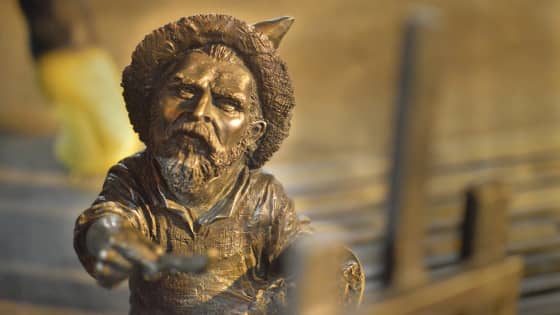Are you curious about the origin of the elusive, mischievous leprechaun? These mythical creatures are a beloved part of Irish folklore, but their exact origins remain a mystery.
In this article, we will explore the fascinating history and legends behind leprechauns.
Leprechauns are tiny creatures in Irish folklore that are often depicted as shoemakers or cobblers. They are known for their mischievous nature and their obsession with gold. But where did these mythical creatures come from? And why have they become such an integral part of Irish culture? Let's find out.
What is the Origin of Leprechauns? - Exploring the Legends and Myths
To understand the origin of leprechauns, we must delve into the rich history of Irish folklore. Here are some fascinating legends and myths about these elusive beings.
Leprechauns in Irish Mythology
In Irish mythology, leprechauns were considered to be a type of fairy. They were often depicted as solitary creatures living alone in the forest or hidden places.
According to legend, leprechauns were also known for their skill as shoemakers. They would spend hours crafting shoes for the fairies and other creatures of the forest.
51 Inspirational St Patrick's Day Wishes
The Origin of the Name "Leprechaun"
The name "leprechaun" is derived from the Irish word "leipreachán," which means "small-bodied fellow".
According to legend, the leprechaun was first mentioned in the medieval Irish tale "The Adventure of Fergus, Son of Léti." This tale tells the story of a king's son who encounters a leprechaun while out hunting in the woods.
St Patricks Day and Leprechauns
St. Patrick's Day is a cultural and religious holiday celebrated on the 17th of March each year. It commemorates the death of Saint Patrick, the patron saint of Ireland, who is credited with bringing Christianity to Ireland in the 5th century.
One of the popular symbols associated with St. Patrick's Day is the leprechaun. In Irish folklore, leprechauns are mischievous, small, bearded men who are known for their love of gold and their tendency to play tricks on people. According to legend, if you catch a leprechaun, he must grant you three wishes in exchange for his freedom.
Leprechauns are often depicted wearing green and a top hat, and they are said to hide their gold at the end of a rainbow. This is why rainbows and pots of gold are often seen in St. Patrick's Day decorations.
Although leprechauns are a beloved part of Irish folklore and St. Patrick's Day celebrations, they are not actually a religious or historical symbol associated with the holiday. Rather, they have become a popular cultural icon associated with the Irish and their rich folklore.
Leprechauns and Gold
One of the most well-known legends about leprechauns is their love of gold. According to legend, leprechauns would hoard their gold in hidden pots of gold at the end of rainbows.
If someone could catch a leprechaun and get him to reveal the location of his pot of gold, the finder would be rewarded with great wealth.
However, capturing a leprechaun is no easy feat, as they are known for their cunning and their ability to disappear in the blink of an eye.
Leprechauns in Modern Culture
Today, leprechauns are a beloved part of Irish culture and are often associated with St. Patrick's Day. They are often depicted as small, bearded men wearing green clothing and a hat. Leprechauns are also commonly associated with luck, and many people wear a small leprechaun figurine or charm for good luck.
FAQs
Q: Are leprechauns real?
A: Leprechauns are mythical creatures and are not considered to be real.
Q: What is the most famous legend about leprechauns?
A: The most famous legend about leprechauns is their love of gold and their hidden pots of gold at the end of rainbows.
Q: Do leprechauns grant wishes?
A: No, leprechauns are not known for granting wishes. They are mischievous creatures who are known for their cunning and their love of gold.
Conclusion
The origins of leprechauns may be shrouded in mystery, but their place in Irish folklore and popular culture is secure. Whether you believe in these mischievous little creatures or not, the legend of the leprechaun is sure to continue to captivate people's imaginations for generations to come.











No comments:
Post a Comment